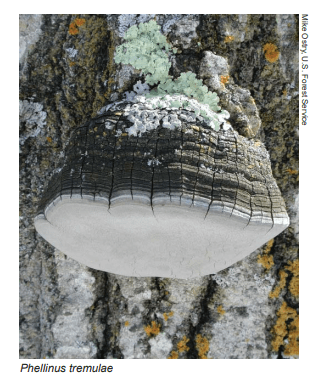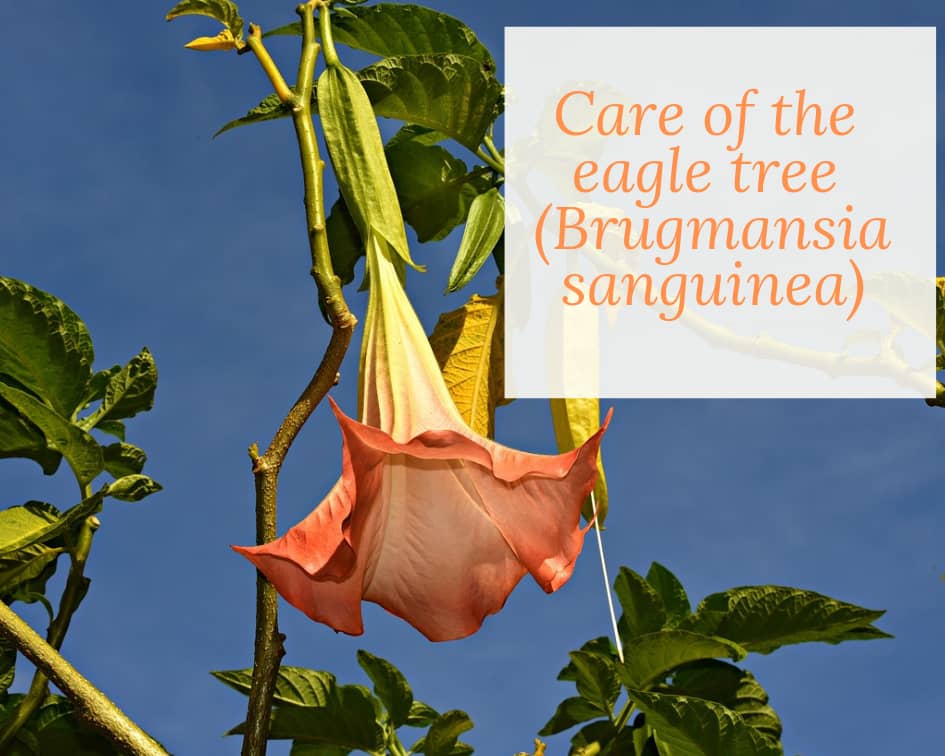This post may contain affiliate links. As an Amazon Associate we earn from qualifying purchases.
If any tree has a right to be a hypochondriac it is the quaking aspen (Populus tremuloides). This fast-growing small to medium sized tree is affected by a plethora of disease pathogens.
In fact, Colorado State University Cooperative Extension agents claim that questions about quaking aspen diseases make up the bulk of calls to their offices about tree problems. A lot of the tree’s problems are attributed to its thin bark which is easily wounded. Hardy to USDA zone 3, despite their sickly ways, quaking aspens are popular for their brilliant gold fall foliage.
This is by no means an exhaustive rundown of what to expect from the various pathogens that attack the quaking aspen, but it will give you a start. If you have any doubts about what is ailing the tree, contact the county cooperative extension office in your area. You’ll find a directory for all 50 states right here on Gardenologist.

About the Quaking Aspen
The quaking aspen tree does best in consistently moist, well drained soil. In fact, it’s intolerant of heavy soils.
It is a fast grower, reaching a height of 30 feet with a 15 foot spread.
The tree is highly ornamental, with flashy gold foliage in the fall and white bark year-round.
Interesting stuff, that bark. “The bark layer of quaking aspens carries out photosynthesis, a task usually reserved for tree leaves. In winter, when other deciduous trees are mostly dormant, quaking aspens are able to keep producing sugar for energy,” according to experts at The National Wildlife Federation.
They also pass on an interesting bit of trivia about a quaking aspen grove in Utah. Apparently, it’s the “… largest known living thing on Earth.” A single root system supports almost 50,000 stems and “The entire organism covers over 100 acres …” and weighs a whopping 6,000 tons.
Pests love this tree as do a number of disease pathogens.
 White Trunk Rot/Aspen Heart Rot
White Trunk Rot/Aspen Heart Rot
Aspen heart rot is caused by a fungal pathogen, Phellinus tremulae. The disease is also known as white trunk rot, and it cause the tree to decay from the inside out.
Early symptoms take place within the tree while on the outside it appears healthy. As the disease progresses the tree develops cracks and conks and decay may become exposed. These symptoms, however, aren’t always visible.
In the home landscape this may be disastrous, so remove the tree at the earliest signs of weakness. This disease is primarily one of the mature quaking aspen, gaining access through wounds in the tree’s bark.
Sadly, the “cure” for this disease is removal of the quaking aspen tree.

Cytospora Canker on the Quaking Aspen
The first symptoms of cytospora canker includes tiny black bumps on the quaking aspen’s bark. Later you may notice orange markings near a wound in the tree’s bark.
Advanced symptoms include dead bark falling from the tree. As the fungus spreads into living tissue it causes girdling, cutting off nutrients and water. Avoid cytospora canker by keeping the quaking aspen tree healthy and avoiding wounds. Keep pests to a minimum as even small wounds they create give the fungus an opportunity to invade the tree.
While there are no effective chemical controls for the Poplar twiggall fly, two other common pests can be controlled — oystershell scale and aphids.
- Dealing with Oystershell scale depends on its stage of life. Use oil spray during the dormant season to kill the eggs that are overwintering on the trees. We recommend High-Yield Dormant Oil Spray.
When they reach the crawler stage they are at their most vulnerable. Use any of the following to reduce their populations:
- Horticultural oil: We like neem oil.
- Insecticidal soap: Can’t go wrong with the Safer brand.
- Pesticides containing carbaryl or pyrethroids
For aphid control, use the aforementioned neem oil.

Ganoderma Root Rot
Ganoderma root rot is caused by the fungal pathogen Ganoderma applanatum. It is evidenced by conks — actually known as basidiospores — on the tree’s trunk. These are flat, shelf-like or hoof-like structures that are dark brown to black on the top and brown to white on the bottom. See the photo, above.
There may be a lot of hidden decay in the tree which could be dangerous in the home landscape. There is no control for ganoderma root rot and removal of the tree is your best course of action.
Shoestring Root Disease
Shoestring root disease (Armillaria) bothers many plants and the quaking aspen is particularly susceptible. The first symptom you may notice is a reduction in growth and yellow leaves. Later, clusters of cream to brown colored mushrooms grow on the trees in summer and fall.
Fungicides won’t help to either prevent or cure this quaking aspen disease.
Good cultural practices can help reduce the chance of an infection:
- Ensure that the tree’s root flare is exposed. This provides the roots with additional oxygen.
- Avoid planting other plants near the tree’s lower trunk.
- Don’t overwater the tree.
- Ensure that the soil at the base of the tree doesn’t become compacted.
- Reduce moisture and soil compaction around the tree
Caused by the fungus Hypoxylon mammatum, hypoxylon canker is a killer. Initial symptoms include cankers that appear as sunken yellow areas on the bark.
Soon, the outer bark develops blisters and peels off. The inner bark is black. Mature cankers may be several feet long, according to scientists with the U.S. Forest Service. The disease causes a slow death, with many trees dying within five years. Unfortunately there is no control for hypoxylon canker.
For more information, please consult the following webites:
United States Department of Agriculture: Cytospora Canker of Quaking Aspen
University of Wisconsin: Tom Volk’s Fungus of the Month for February 2004
USDA Forest Service: How to Identify and Minimize White Trunk Rot of Aspen
British Columbia Ministry of Forests: Armillaria root disease, Armillaria Ostoyae
USDA Forest Service: Hypoxylon Canker of Aspen
Photo Courtesy: Scott Catron/Wikimedia Commons




